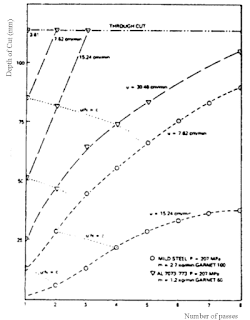U.S. crude oil exports grew to an average of 1.1 million barrels per day (b/d) in 2017, the second full year since restrictions on crude oil exports were removed. Crude oil exports in 2017 were nearly double the level of exports in 2016. Increased U.S. crude oil exports were supported by increasing U.S. crude oil […]
Tag Archives: More
A solar photovoltaic (PV) system’s panel capacity is often reported in direct current (DC), while operating capacity in the United States is reported as it is delivered to the grid in alternating current (AC). For economic and engineering reasons, capacity values reported in DC typically are 10% to 30% higher than those reported in AC […]
By Lawrence Segbefia Ghana’s gas woes will soon be a thing of the past as the Ministry of Petroleum prepares to present to cabinet, a comprehensive Gas Master Plan aimed at addressing infrastructure challenges and gas delivery in the country. The document which is yet to reach cabinet in a few weeks will also address […]
This is a short post illustrating an early stage in our development of a light-weight tool that could be carried into building rubble, after a collapse, and drill down through it to provide access for tools to search, without the danders of destabilizing the pile. We illustrated the lack of vibration by placing a full […]
In the evolution of the design of a waterjet/suction tool described in the last post I commented on the ability to balance the jets so that they did not spray material beyond the suction shroud. At the same time the shroud, to be most effective, has to be within a quarter–of-an-inch of the final surface, […]
June 8, 2015 Source: U.S. Energy Information Administration, Note: PADD is Petroleum Administration for Defense District. In an effort to better present crude oil storage capacity and use across the United States, EIA has prepared new tables as part of the semiannual . The new series show crude oil stocks held at refineries crude oil […]
Frontal photographs taken of waterjets, regardless of pressure, show that the jet spray widens as the jet moves away from the nozzle. Yet, because of the erosion of the outer layers of the jet by the surrounding fluid, the central core of effective jet pressure reduces as that distance grows. The normal way in which […]
The structure of the jet flow from an orifice makes a tremendous difference to the ability that the jet then has in terms both of its range and its cutting ability. And one of the major factors that control the structure of the jet lies in the flow conditions just upstream of the orifice itself. […]
May 5, 2015 Source: U.S. Energy Information Administration, Note: All sources are net receipts except field production. PADD is Petroleum Administration for Defense District. Monthly rail receipts of crude oil accounted for more than half (52%) of the crude oil supply to East Coast refineries in February. As U.S. and Canadian production of crude oil […]
In the last post on this topic I pointed out that one of early drivers to the use of long-chain polymers in water came from the reduction in friction that it provided to fluid flow through long pipes. In many instances this has been the driving force for the selling of the product, and in […]
April 16, 2015 Source: Department of Transportation’s Based on data from the , households with more vehicles not only travel more, but often put more miles on their most-used vehicle compared to households with fewer vehicles. Households with just one vehicle drove an average of 10,600 miles per year, while households with six or more […]
April 8, 2015 Source: U.S. Energy Information Administration, Short-Term Energy Outlook U.S. drivers are projected to pay an average of $ 2.45/gallon (gal) for regular grade gasoline this summer (April through September), according to EIA’s released yesterday. This year’s projected average summer price is down from a $ 3.59/gal average during summer 2014. The lower […]
March 30, 2015 Source: U.S. Energy Information Administration, Petroleum Supply Monthly U.S. crude oil production (including lease condensate) increased during 2014 by 1.2 million barrels per day (bbl/d) to 8.7 million bbl/d, the largest volume increase since recordkeeping began in 1900. On a percentage basis, output in 2014 increased by 16.2%, the highest growth rate […]
March 24, 2015 Source: U.S. Energy Information Administration, Note: Data include generation from plants greater than 1 megawatt. California has become the first state with more than 5% of its annual utility-scale electricity generation from utility-scale solar power, according to EIA’s . California’s utility-scale (1 megawatt (MW) or larger) solar plants generated a record 9.9 […]
February 18, 2015 Source: U.S. Energy Information Administration, Drivers of Household Energy Consumption The growth in residential energy use has slowed to below the rate of household growth, meaning that per-household energy consumption has decreased. Analysis of EIA’s conducted since 1980 shows how improvements in energy efficiency reduced energy intensity enough to offset more than […]





